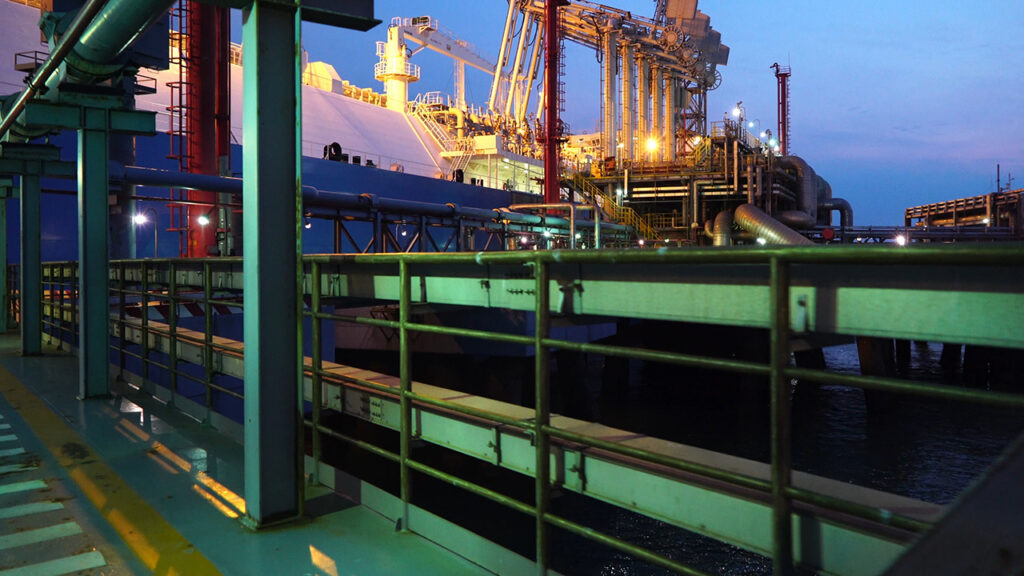IMO 2020- Scrubbers – A good investment?
In our latest IMO2020 briefing, we look at some of the potential benefits industry stakeholders may stand to gain from investing in vessel scrubbers, otherwise known as Exhaust Gas Cleaning Systems (EGCS).
IMO 2020 in brief
From 1 January 2020, the MARPOL Annex VI regulation limiting sulphur content in marine bunker fuel to 0.5% (down from the current level of 3.5%) will enter into force.
This applies to vessels trading outside Emission Control Areas (ECAs), where the maximum fuel sulphur content limit shall remain at 0.1% for the foreseeable future.
Owners essentially have three options to choose from, in order to comply with the Annex VI regulation:
- Install EGCS on their vessels.
- Buy more expensive, low sulphur content compliant fuel.
- Utilise alternative clean fuels, such as LNG.
This briefing explores factors around option 1: the cost, installation and use of EGCS.
Scrubbers and IMO2020
We anticipate that fitting EGCS to vessels will be attractive to certain owners as EGCS should allow for the continued use of high sulphur bunker fuel (i.e., ‹3.5% but › 0.5%) following the implementation of IMO2020.
How do EGCS work?
In simplistic terms, EGCS generally work by spraying alkaline water into a vessel’s exhaust to remove sulphur and other unwanted chemicals, either via open-loop system, closed loop-system or by a hybrid system of the two.
Controversy remains as to whether this is, in fact, an environmentally friendly process. Nonetheless, the use of EGCS is still widely accepted as a legitimate option in busy trading regions across the globe.
Investing in an EGCS: The pros and cons
Some owners are speculating that the shift from 3.5% fuel sulphur content to less than 0.5% from 1 January 2020 could leave behind a glut of supply in heavy fuel oil (HFO) high in sulphur content on the market.
With increased HFO supply and anticipated lower demand, it is not unlikely that prices for HFO will drop significantly and, as such, represent substantial savings to owners and time charterers in the cost of vessel trading. Accordingly, investing in scrubbers may prove to be a smart commercial decision.
However, such an investment can cost upwards of US$3m, and reach as high as US$10m per vessel.
Owners may balk at these prices or consider the investment risk too high, particularly where freight markets may remain relatively flat.
There is also the risk that some trading regions could, in time, ban the use of ECGS altogether.
Other related considerations may come into play – for example, an owner may not have access to the financing required to purchase a scrubber and there may be issues regarding dry-dock capacity and availability to fit scrubbers to a vessel in time to avoid loss of vessel trading time and income.
Notwithstanding, owners may explore options (other than bank financing) when it comes to investing in EGCS for their vessels.
For example, owners could attempt to negotiate agreements with their trading and chartering counterparties to share the investment cost over a period of time, say, under long-term time charters or contracts of affreightment.
Sharing the risk of investment may also make sense where multiple parties are to benefit financially overall from trading EGCS-fitted vessels.
Chartering operators and commodity buyers may substantially benefit from the lower price of freight for moving cargo with scrubber-fitted vessels.
What is a CAPEX clause?
One device interested stakeholders are increasingly using in their contracts is an ‘owner compensation’ or ‘capital expenditure’ (CAPEX) clause. This working example illustrates its potential use:
“Owners to arrange, supply and install an open-loop type sulphur scrubber with the capability of reducing sulphur output to [….%]
The cost of the scrubber shall be based on the actual invoices provided by the ship-yard, the scrubber manufacturer and Class.
Charterers to contribute […%] of the cost of supply, installation and certification on an open book basis.
Charterers contribution shall be amortised per day over the firm period of this Charter-party
Owners estimate (without guarantee) total costs supply, installation and certification to be [US$…..]”
This could make sense from an owners’ perspective where it should, in theory, be able to reduce the investment cost and risk of a scrubber asset, which it will ultimately own. This arrangement may also entice charterers to fix long term, which may be very attractive to owners in uncertain freight markets.
From a charterer’s perspective, they may benefit from the opportunity to purchase cheaper, non-compliant fuel over a period of time (particularly where the price spread between compliant and non-compliant fuel is great), resulting in significant cost savings.
Vessels already fitted with EGCS: Profit share provisions
Given the price of compliant fuel remains unknown, another provision that provides a means by which owners can share in some of the financial benefits of presenting charterers with a scrubber-fitted vessel is a profit share provision.
In certain instances, it would be commercially justifiable for owners to negotiate additional contribution from charterers where they deliver scrubber-fitted vessels (whether new-build or retrofit) under a time charter.
Rather than simply raise hire rates, which may not be commercially viable to attract the right business, the parties can agree a type of profit share linked to the fuel spread price between compliant and non-compliant fuel over the course of the charter. This in turn may permit a closer tracking of the true financial benefit of trading with a scrubber-fitted vessel. Some example wording:
“Vessel will be delivered fitted with an open loop type sulphur scrubber.
The Charterer shall make a lump-sum profit share payment to the Owner on a quarterly basis.
This lump-sum profit share payment is to be calculated as follows:
Lump-Sum Profit Share Payment = (Total Actual Scrubbed HFO as per vessel’s log per quarter) x (Actual Fuel Spread per quarter) x 45%
It is agreed that Actual Fuel Spread is to be defined as: the average of IMO 2020 compliant Singapore Platts Marine Gasoil 0.1% index price over that quarter and the actual non-compliant HFO price over that quarter.”
A working example applying the above formula:
If Total Actual Scrubbed HFO in a particular quarter = 1500mt
If Actual Fuel Spread over the same quarter = 300mt
Then the calculation for the Lump-Sum Profit Share Payment to Owners for that quarter is
US$202,500.00 = (1500) x (300) x 45%
There are, of course, many other potential variations for this type of provision. For example, rather than link the profit share to actual HFO consumption, the parties could agree up front that a fixed amount for annual consumption should be used in the calculation, say, based on an historical average or estimated basis.
This could provide better protection to owners where they will not be reliant on the vessel actually burning sufficient amounts of non-compliant fuel to achieve a lump-sum profit share payment.
Where owners are relying on these lump-sum payments as a return on their investment in a scrubber (owing to a speculative retrofit of the vessel in question), this would be a particularly important requirement to assist with meeting their financing obligations.
Key takeaways
To gain an edge over competitors in this space, commercial parties will need a little more creativity in what will likely be an uncertain and testing time for key industry stakeholders as we approach the effective date of 1 January 2020.
However, a word of caution for charterers: the commercial wisdom of negotiating these profit share or CAPEX clauses will very much depend on what the rest of the market does and how prices react.
Owners ought to be careful to invest in the right scrubber technology, utilising reliable builders, because, ultimately, any violation of the Annex VI regulation owing to a defective or malfunctioning scrubber could lead to significant fines. Financiers should also be alive to this risk.









-1024x683.jpg)
